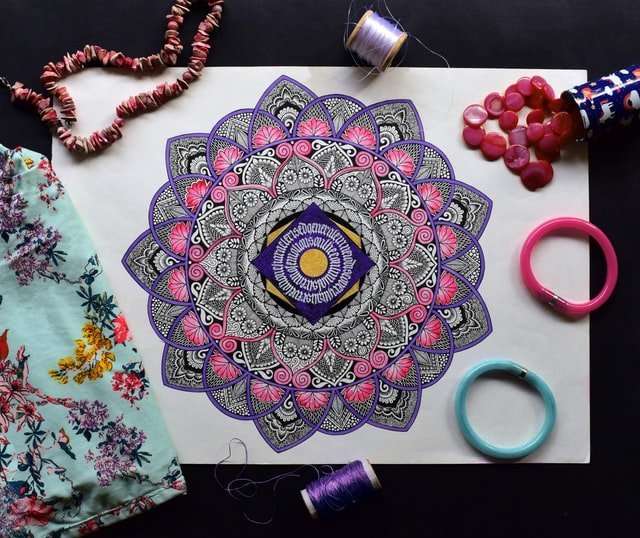Art lessons often go something like this: “Here’s how you do it. Here’s the basic shape, and here’s how you shade it.” Which is all well and good, but it leaves out the most important part of any piece of art: what makes it cool?
How did the artist achieve that effect? Let’s explore it by breaking it down: a blog about art and about how artists sculpt, sketch, and watercolor.
Artists are always reaching for something new. They’re always trying to break with tradition to create something different. But if they go too far, the new thing can’t be understood. It needs to fit into a recognizable form – something we understand. We call this fitting into a recognizable form balance between tradition and innovation.
If an artist constantly breaks away from tradition as soon as he starts a piece of art, then there’s no way to understand what he’s doing or why he chose that path – because there is no path. There is just a bunch of random shapes mashed together in an incoherent mess.
If an artist never breaks with tradition, on the other hand, then his work may look familiar – but it will also look boring. It will look like everyone else’s work; it won’t stand out
I know it seems like I’m supposed to be the art teacher and you’re supposed to be the student, but if you want to take this class seriously, then we need to talk about the point of art. You might think it’s cool, or fun, or interesting, but those things are just good for your own personal use (which is still important).
Trying to make something that’s just cool or just fun or just pretty is like trying to eat a chocolate cake without any cake. It’s not enough. When you’re looking at a painting, suddenly there will be a perfect little section that is exactly what you feel or think or want or need. You’ll come out of the museum feeling different than when you went in. It’s exciting!
I don’t mean that art changes who you are, but sometimes it doesn’t even feel like art; it feels like someone got inside your head and took out everything that was bothering you and put in something better instead. That’s what I mean by “cool.”
You can find plenty of “cool” stuff on the internet. The kind of art I teach you how to make is more specific than that: I’m trying to help you find moments that move people from one emotion to another. From
The easy way to paint a picture is with an eyedropper, or even just with the bucket tool. Tool a few curves over the canvas and you’re done. But there’s something about painting by hand that people can’t resist trying. Maybe it’s that it seems so simple to replicate a photograph, yet so much more satisfying to create something of your own.
Trying to recreate a photo by hand can take a lot of practice and skill, though. You’ll need to learn how to see photographs in terms of shapes and forms rather than colors and tones, how to draw realistic lines and proportions, how to mix the right colors for skin tones and eyes, how to render lighting and shadows realistically, how to add texture without using filters, and more.
Here at Abduzeedo we’re big fans of drawing by hand, so we’re excited to bring you this new series on The Art of Hand Drawing. We’ll show you all kinds of techniques that will help you create amazing drawings, paintings, illustrations — whatever your creative goals may be!
I have had an interest in art since I was very young. I would watch my mother paint and draw and always thought it fascinating. My father was a skilled artist as well, but he didn’t have time to teach me. He said, “One day when you are older, you will study art.” I waited for that day, hoping that someday I wouldn’t have to just watch my mother paint and draw, but could do it myself. When I was 11 years old, my mother enrolled me in an art course at the local community college. It was there that I drew my first self portrait.
I remember the excitement of being able to work with oils and learn how to sculpt faces and make them look real. That was the beginning of my journey into art. At age 13 I began drawing portraits for family and friends; one year later I enrolled in my first formal art class at the college level.
Artistic training was essential for many artisans and artists, but it was never an end in itself for the great majority of people. In most cultures, the majority of those who made art were also involved with it because they had to feed themselves.
The artisans in Rome were usually slaves, who could be sold when their value as skilled workers had been used up. But there were also free artisans, whose livelihood was independent of any patron. The Roman artisans produced many objects that have survived and are still admired today, such as glass vessels, bronze statues, and mosaics (woven pictures created from small colored stones).
Although they were skilled workers, the Roman artisans did not belong to the same social class as their patrons. In fact, most of them were not citizens of Rome; they came from Greece or Egypt or other foreign lands.
A number of these artisan categories were considered to be on a par with—or even superior to—the slaves who worked as household servants. These included some types of mosaicist and goldsmiths.* They received a large number of privileges and were often valued members of society. They enjoyed a certain degree of freedom and respectability.
The emperor Augustus paid particular attention to the goldsmiths, who played
Art is a word with many meanings. Art can be creative, beautiful and moving, or abstract and hard to understand. It is a source of knowledge, emotion, inspiration, and controversy.
It is usually defined as a skill that requires the ability to create something that is the expression of imagination and talent.
Art expresses the artist’s feelings and ideas through a form that is capable of being reproduced.
I love art. I have always loved art. If I were not an artist myself I would probably just love to look at art.
I am always looking for new artists to feature on this site, so if you are interested in having your work featured please send me an email with links to your work. As long as it is good quality art I will consider it.
If you’re a visual artist and you want to learn how to draw, why not just ask an expert?
The problem with that is, if you’re going to draw realistically, the expert probably isn’t going to be able to help you. That’s because you have a fundamental difference in your view of the world. The expert has been taught that all lines are either straight or curved, whereas you believe that many lines are wiggly and squiggly. (For example, edges of most things are wiggly.)
Trying to learn from someone who sees things differently from you is like trying to teach a fish how to swim. It’s not impossible, but it’s pretty unlikely to work. But never fear! I can show you how to see the way experts see, so that the next time an artist offers advice about drawing (or sculpting or painting), you’ll be able to understand what they mean!


